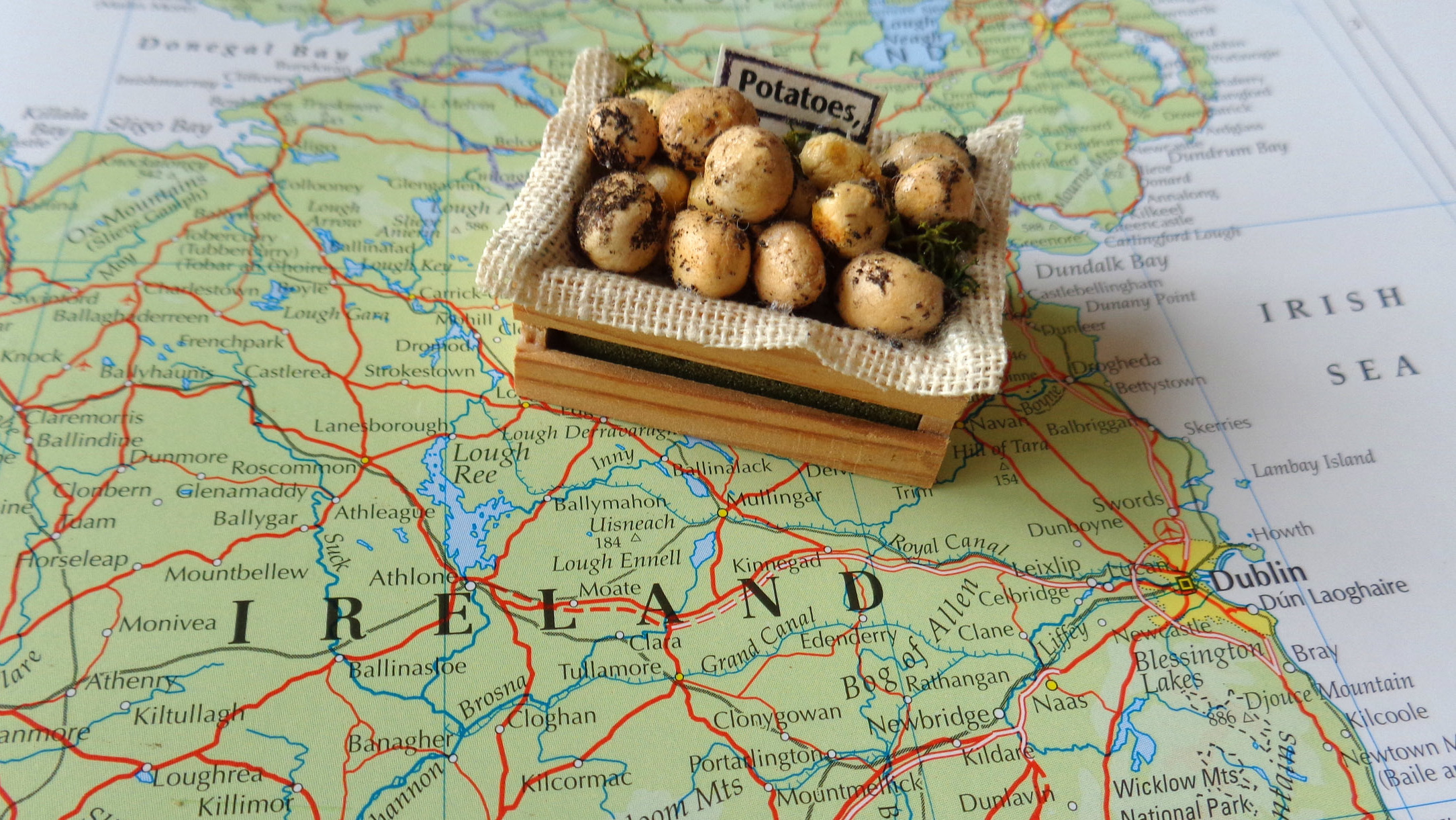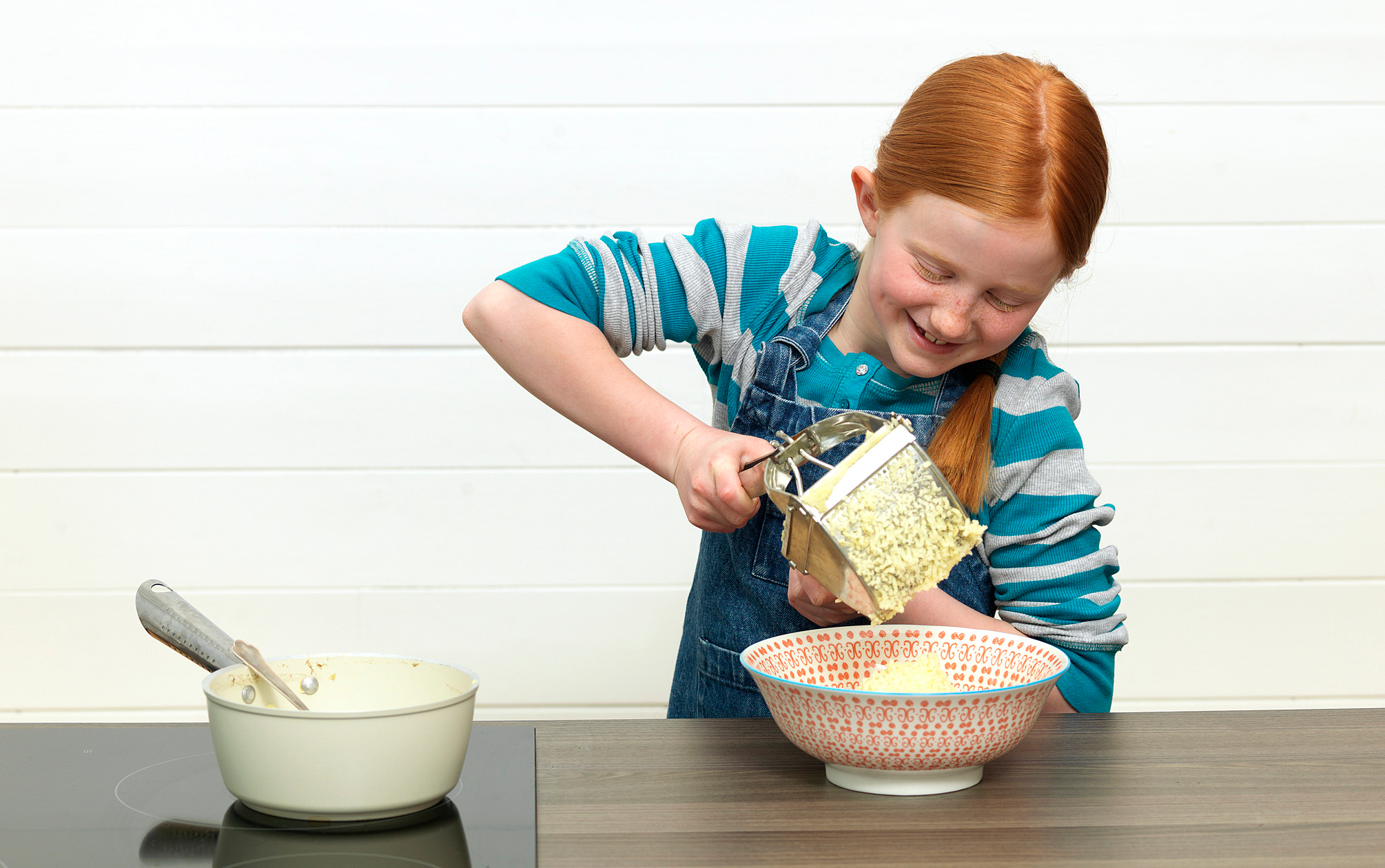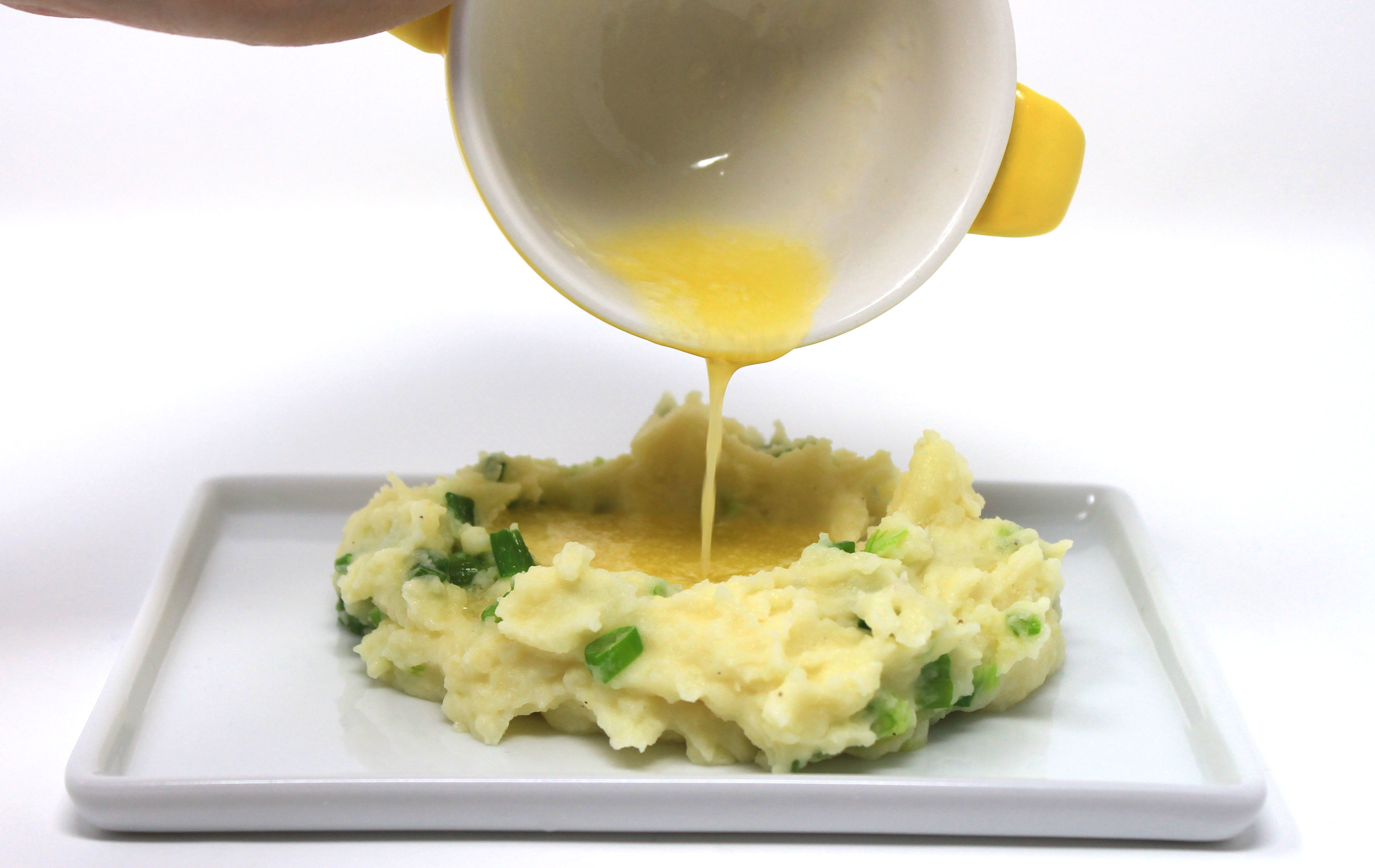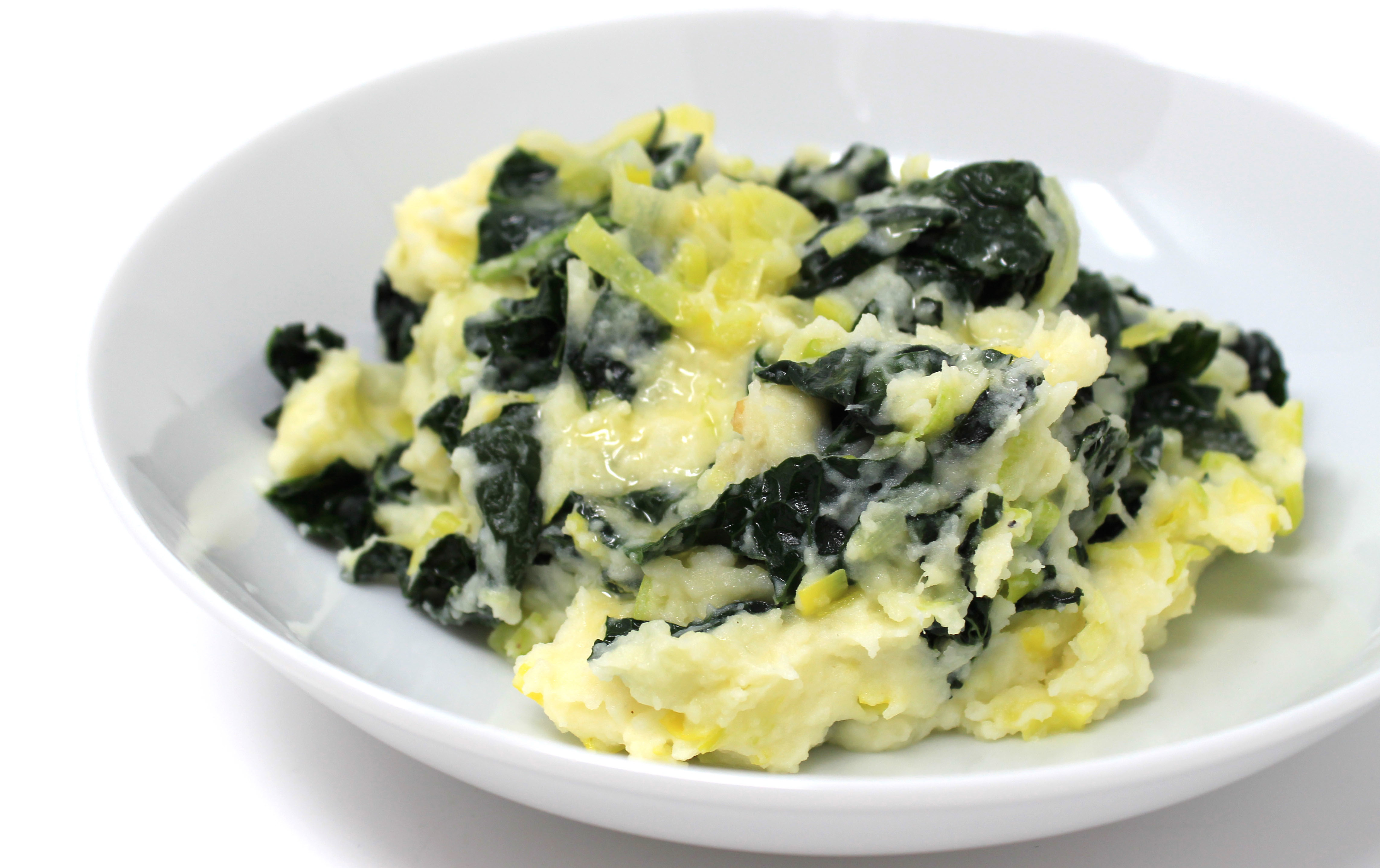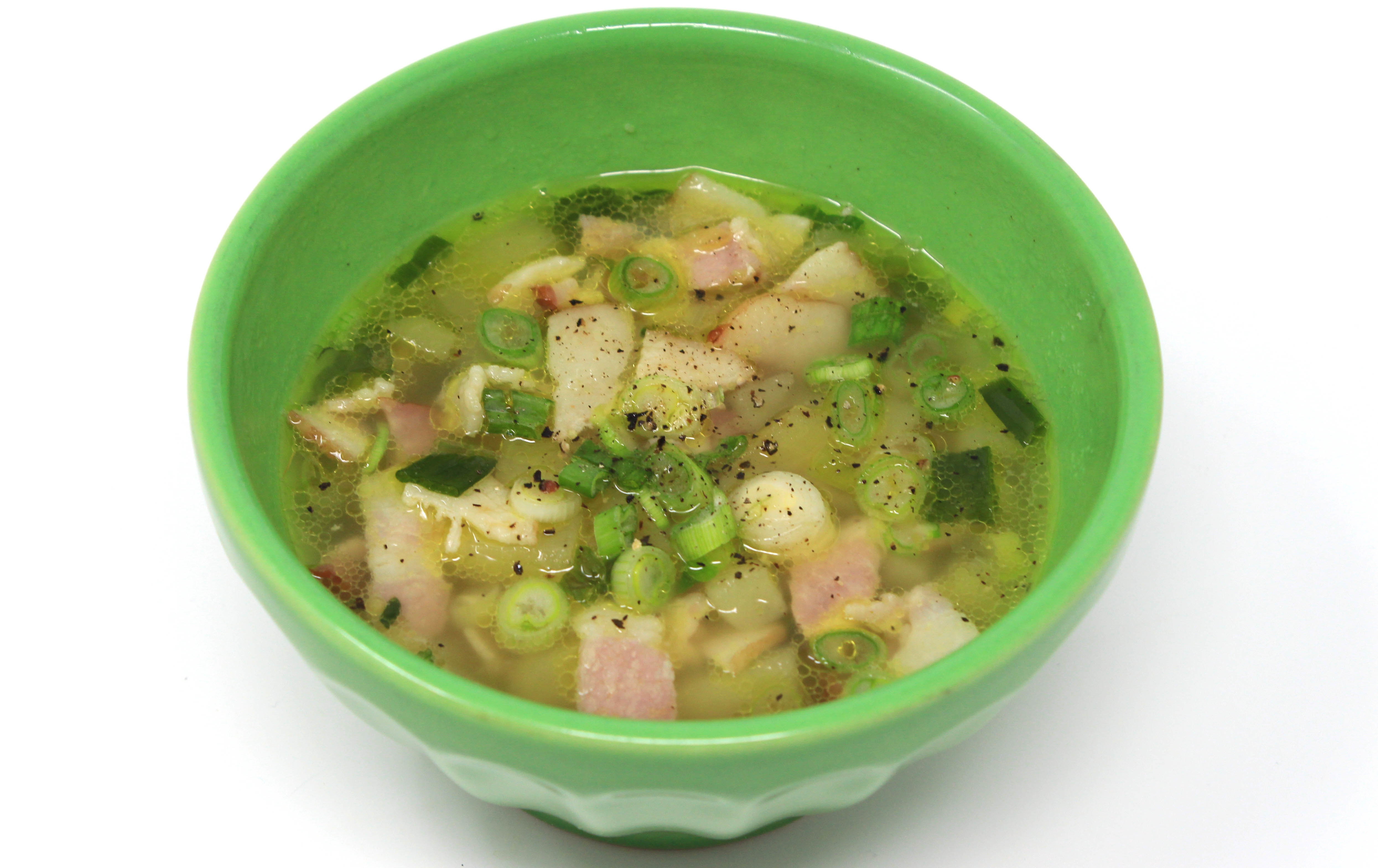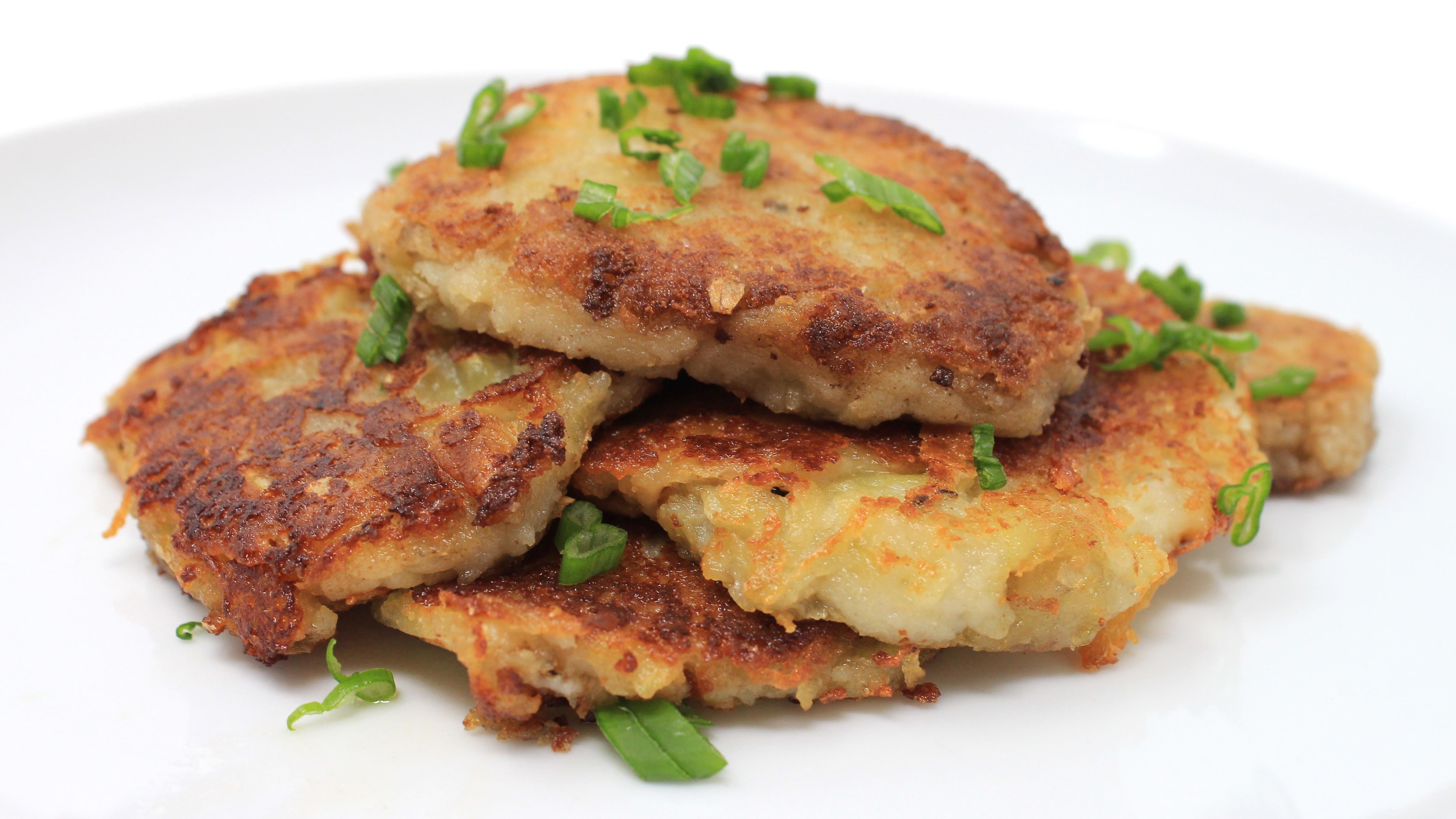Master These Essential Potato Dishes Of Ireland
We may receive a commission on purchases made from links.
Mountains of boiled potatoes have rolled blandly across my dinner plate throughout my life. I was never thrilled by their presence, tolerating them but never truly enjoying them. It wasn't until later in life when I began studying the food of my Irish heritage that I began to realize their worth. I treat them with more respect now, and prepare them with more care.
One of the key books that connected me with my Irish heritage is Darina Allen's Irish Traditional Cooking. According to Allen, a chef and proponent of Irish cooking and founder of Ballymaloe Cookery School, the potato found its way to Ireland by the early 17th century. Potatoes had come to England and the rest of Europe as a novelty plant for the expansive vegetable gardens of wealthy estates. When the crops were found to grow easily and abundantly, it was soon embraced in Ireland as a comforting crop offering food security. Potatoes became the mainstay of peasant and working-class Irish people, often the main source of nutrients in their diets—a veritable life-saver when combined with protein from readily available buttermilk, iron from foraged plants like nettles and lovage, and scraps of meat or fish.
Many people have some peripheral knowledge of Ireland's Potato Famine of the mid-1800s, but most don't know its devastating extent. In 1845, a fungal disease known as potato blight destroyed two-thirds of the potato crop, which had already begun to have a few shaky years. The following years saw further bad harvests—famine and disease swept through the poorer classes who were completely reliant on one variety of potato. One million Irish people died, and roughly 2 million were forced to emigrate. Reliance upon one key foodstuff had never been so tragically demonstrated, writes Allen.
After the blight, the potato rebounded and fed the masses once more. Today Ireland boasts several unique and disease-resistant potato varieties, and efforts are being made to preserve even more heritage varieties. The potato remains special to the Irish. It can still feed a lot of hungry mouths for relatively little cost. It can be mixed, and mashed and mingled in a thousand different ways, and Irish cooking notably excels at elevating the tubers to comforting main courses.
The dishes below enliven humble potatoes, pairing them with their good friends: alliums, brassicas, and porky bits. All these recipes need butter—lots of butter. You should not feel shame or trepidation at the amount. Upon consuming you should feel a connection to Irish traditional foods, right there on your buttery lips. These recipes, and eating instructions, are inspired by Darina Allen's Irish Traditional Cooking, as well as my own family's traditions.
Mashed potato notes
Use russet or round white potatoes. Irish recipes traditionally use drier, flour-y types, rather than waxy types like yellow potatoes. Try boiling potatoes with their skins—or "jackets"—on. Once tender, slip off the skins quickly, ideally, burning your fingers as little as possible. If you have a potato ricer, use it. If not, these recipes are forgiving, as a few potato lumps will be indistinguishable from the supporting veggies. You actually want to mash the potatoes in the hot pot it was cooked in, over a low flame as you mash in ample warm butter. Then add warmed milk or cream to the mash to achieve your preferred consistency. You'll notice there are few specific measurements provided, but assume 1 large russet potato—about 1/2 lb.—per person. The amount of scallions or bacon you use depends on your personal preferences for these flavorings. For me, it's a lot.
Champ
Champ is mashed potatoes with scallions and butter. Sauté 2-3 sliced scallions lightly with a pat of butter and bit of salt until tender. Stir into your mashed potatoes. Serve up a large scoop of champ, hollowing out a well in the center and filling it with butter. Eat from the outside, dipping each bite into the butter pool.
Colcannon
At its simplest, colcannon is mashed potatoes mixed with cabbage or kale, though regional varieties in Ireland may use seaweed, stinging nettles, or wild garlic. This is my favorite version: mashed potatoes laced with dark ribbons of sautéed kale, melted leeks and garlic. Wash a slender leek well (it can have a lot of dirt on the inside) and finely slice. Add to a sauté pan slicked with butter. Cook over low heat, adding a splash of water if the leeks start to brown. Once softened, stir in a large bunch of julienned Lacinato kale and a finely sliced garlic clove, and cover and cook together until kale has softened but not withered too much. Meanwhile, boil your potatoes until tender, peel, and mash. Season the kale-leek mixture with salt and pepper and fold through the mashed potatoes. Taste for salt, adjust if needed, and top with lumps of butter.
Potato, bacon, and scallion soup
If you have a nice homemade chicken stock or even lamb stock, use it here, but plain water will do too, as you'll still end up with smoky, oniony flavored broth, made silky with the potato starch. The potato can be cubed, or sliced into 1/8-inch rounds. Fry the bacon pieces first, adding the potatoes once the fat has rendered. After a few minutes, add the chopped scallions and stock, just covering the potatoes by an inch or two—don't drown them. Simmer gently until potato is tender. Taste for salt, and add a few crack of black pepper. A bit of butter added at the end wouldn't hurt either.
Boxty
Made with equal parts mashed and grated raw potato with a bit of flour to bind, boxty is a cross between potato pancakes and hash browns. Boil one large potato until tender, peel and mash in a bowl. Meanwhile, grate a separate raw potato, and squeeze out the water in a clean dish towel. Add to the mashed potato, sprinkle over a 1/4 cup of flour, and a pinch of baking soda, salt, and pepper, and mix. Drop tablespoon-sized scoops of potato mixture into a buttered medium-hot pan, flattening the pancakes slightly if too rounded. Pan-fry until golden and crusty, about 5 minutes per side. Be gentle when flipping. Serve with butter and a scattering of chives.
